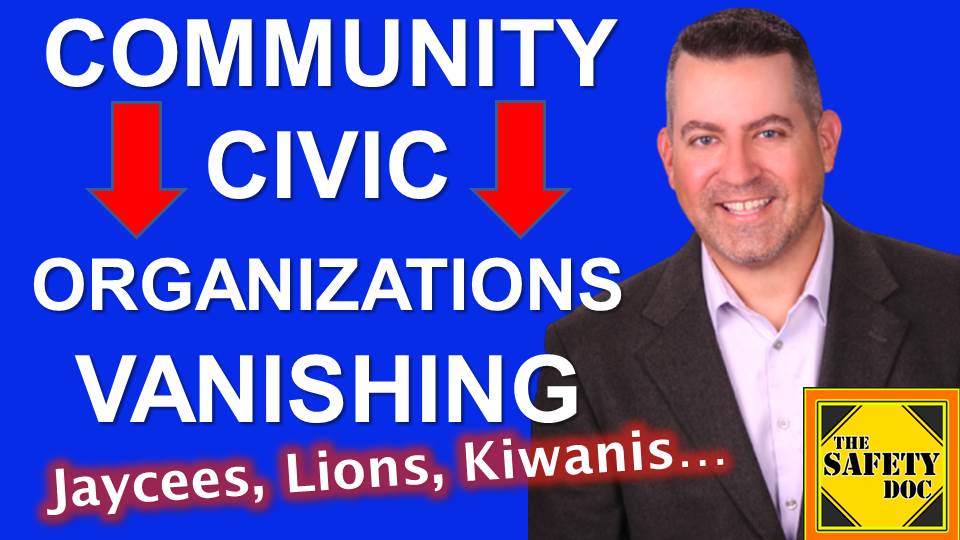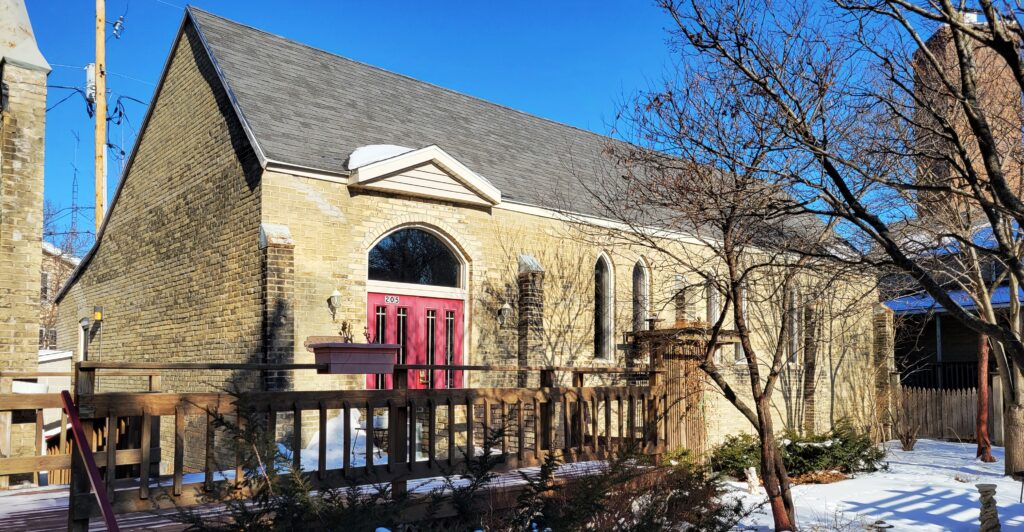Community Civic Organizations Vanishing | Jaycees, Lions, Kiwanis, & Rotary Fading Fast | SDP167
[Podcast] Doc calls our attention to the strange disappearance of civic organizations in America and the subsequent impact on youth safety and community safety. Peaking in the 1960s, tiny villages and big cities bustled with volunteers of all ages to build parks, serve as crossing guards, hold free throw shooting contests for kids, work voting stations, and pass local knowledge from generation to generation. There was a time when people prioritized the time to gather at local restaurants to discuss ways to volunteer and improve their community.

DIRECT LINK to MP3 of this Episode: https://tinyurl.com/SDP167-AUDIO
HISTORY. Civic organizations in the US were closely tied to church-affiliated groups (Knights of Columbus), fraternal organizations (Freemasons), and also unions. The Veterans of Foreign Wars (VFW) is an organization of U.S. war veterans. And while VFW posts were practically in every community in America following WWII, membership is dwindling and posts have been closed and consolidated. Per a 2021 article by Faith Bottum of the Wall Street Journal, “The VFW has around 1.5 million members, a drop of a million from 1992. The average age is 67, with 400,000 members over 80. The largest organization of veterans’ clubs, the American Legion, has two million members, down from 3.3 million in 1946.”
POPULAR CIVIC ORGANIZATIONS. Rotary, Kiwanis, Lions, Jaycees, and Optimists are among the well-known volunteer groups of the latter half of the twentieth century. Most have been reduced to a small fraction of their halcyon days. According to a 2020 article by Payal Gangishetti of Nonprofit Sector News, “The Jaycees, founded in 1920, is a leadership training and civic organization for people between the ages 18 and 40. [It’s] peak membership was 360,000 in 1976 and today has just 12,000 members in the United States. Doc recalls the village Jaycees chapter building a playground near the river in the community of 1200 where he was raised in northern Wisconsin. “The park is still there,” noted Doc. “The Jaycees and other civic organizations’ names and logos adorn the ‘Welcome to Town’ signs, but for practical purposes, the organizations are extinct. Maybe their endowment funds their fee for the placards on the main roads heading into town?”
LOSS OF VESTING TO BUILD COMMUNITY CONNECTEDNESS AND PERSONAL PURPOSE. As Doc researched the relationship between volunteering in civic organizations and community safety, the literature review was similar to driving a car that was out of alignment. Everything pulled in the direction of how the individual benefited from volunteering and much less was written about the collective benefit of society or of the community. Doc interprets this as false-memory solipsism. In other words, the core value of a civic organization (as written in numerous articles) is the fulfillment of each member. What’s in it for me? Simply put, the literature review doesn’t match Doc’s experiences with civic organizations.
BENEFITS TO VOLUNTEERS. The Mayo Clinic Health System says volunteering reduces stress levels and the risk of depression. Volunteers often learn valuable life and job skills while staying physically and mentally active. The Mayo Clinic cites a Longitudinal Study of Aging that concludes volunteers even live longer. Volunteers who have chronic or serious illnesses often experience less pain. HealthyPeople.gov — a part of the Office of Disease Prevention and Health Promotion that is tasked with providing science-based, 10-year national objectives for improving the health of all Americans — agrees. Healthy People points out that clubs offer emotional support and create a sense of community.
BENEFIT TO THE COMMUNITY. Beyond enriching each individual volunteer, projects benefit the greater community in the manifestations of parks or mentoring. Groups might focus on raking leaves at somebody’s house. Build relationships – rally around people in need. A Lions Club in Windsor Locks (pop. 12,613), Connecticut ran the volunteer ambulance service in 2019!
WHY THE DECLINE? The Loki argument is “The Internet” wiped out the organizations. But, this is recited by people who don’t recall the days before the Internet. The across-the-board declines in membership appeared in the 1980s. Most recently, remote work mobility and pandemic cocooning might have sealed the fates for many civic organizations. These organizations have adapted to social media platforms, but that isn’t a substitute for in vivo community enrichment activities.
DOC’S CIVIC VOLUNTEERING. From 2004-2009, Doc served as a volunteer tour guide and handyman at historic Fort Winnebago Surgeons’ Quarters in Portage, Wisconsin. With his Dad, he re-built the split rail fence and the well. Doc also volunteered in various roles for the monthly community lunch at Couper Hall.


This is episode 167 of The Safety Doc Podcast published on 01-18-2022.
FOLLOW
- Watch this episode on “The Safety Doc” YouTube channel https://tinyurl.com/SDP167-VIDEO
- Listen to this episode on PodBean MP3 https://tinyurl.com/SDP167-AUDIO
- Apple Podcasts http://tinyurl.com/SafetyDocApplePodcasts
- SAFETY DOC WEBSITE & BLOG safetyphd.com
- Follow David & The Safety Doc Podcast on Twitter @SafetyPhD
- Email Dr. Perrodin thesafetydoc@gmail.com
Purchase Dr. Perrodin’s books
School of Errors – Rethinking School Safety in America
The Velocity of Information – Human Thinking During Chaotic Times

In Japan, parents are assigned to watch over kids going to and returning from school. Also stronger family support such as elderly being cared for by younger family. Japan boasts a distinctively varied network of local civil society organizations, most notably its neighborhood organizations (NHAs). These continue to do well today, although also in decline. The question is how do civic organizations impact population safety from violence, homelessness, forgotten elderly or poverty. Here’s link to Japan article https://www.asianstudies.org/publications/eaa/archives/grassroots-democracy-and-civil-society-in-japan/